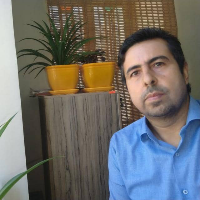Representing the Struggles of Motherland and Otherland in Persian Fictions about Immigration
Author(s):
Article Type:
Research/Original Article (دارای رتبه معتبر)
Abstract:
Cultural clash and identity conflicts are amongst the main effects of immigration. Cultural differences between the two countries cause cultural conflicts. Immigration may cause cultural and identity differences between parents and children. Sociologists have discussed
their theories about the status of acculturation and the cultural gap of immigrants in the host society. Fiction provides a ground for representing the forms and consequences of various cultural conflicts of immigration. This paper, based on sociological theories on such
concepts as integration, adaptation, assimilation, and separation, investigates the three stories of "Morgh-e Eshgh", "Bozorgrah" and "Che Kasi Bavar Mikonad, Rostam". In "Morgh-e Eshgh", the struggle between two generations leads to the endless resistance and
confrontation between the first and second generation of immigrants which causes difficulties in their acculturation process. In "Bozorgrah", the immigrant who has been separated from the culture and identity of the motherland tries to join the host community by choosing assimilation and integration strategies; but the past doesnt leave him alone. He gets into a precarious and challenging situation regarding the two cultures where he must answer these questions: does it worth to preserve the culture of the ancestors?" And does it worth to maintain the relationships with other groups of immigrants?. In the novel, "Che Kasi Bavar Mikonad Rostam", by choosing the assimilation strategy, the child does not follow her mother's behavior and shapes her behavior based on the values and norms of the host culture. The mother who is interested in the culture of the homeland without paying attention to the host society avoids interacting with the other-land or the other culture, and by choosing a separation strategy, raises the conflict between herself and her daughter.
their theories about the status of acculturation and the cultural gap of immigrants in the host society. Fiction provides a ground for representing the forms and consequences of various cultural conflicts of immigration. This paper, based on sociological theories on such
concepts as integration, adaptation, assimilation, and separation, investigates the three stories of "Morgh-e Eshgh", "Bozorgrah" and "Che Kasi Bavar Mikonad, Rostam". In "Morgh-e Eshgh", the struggle between two generations leads to the endless resistance and
confrontation between the first and second generation of immigrants which causes difficulties in their acculturation process. In "Bozorgrah", the immigrant who has been separated from the culture and identity of the motherland tries to join the host community by choosing assimilation and integration strategies; but the past doesnt leave him alone. He gets into a precarious and challenging situation regarding the two cultures where he must answer these questions: does it worth to preserve the culture of the ancestors?" And does it worth to maintain the relationships with other groups of immigrants?. In the novel, "Che Kasi Bavar Mikonad Rostam", by choosing the assimilation strategy, the child does not follow her mother's behavior and shapes her behavior based on the values and norms of the host culture. The mother who is interested in the culture of the homeland without paying attention to the host society avoids interacting with the other-land or the other culture, and by choosing a separation strategy, raises the conflict between herself and her daughter.
Keywords:
Language:
Persian
Published:
Research in Persian Language & Literature, Volume:16 Issue: 1, 2018
Page:
85
https://magiran.com/p1873683
سامانه نویسندگان
مقالات دیگری از این نویسنده (گان)
-
Analysis of the circulation of story writing in immigration literature Passing from political fiction writing and the emergence of the story of identity thought
Mehdi Saedi *
Journal of Contemporary Persian Literature, -
نقد و بررسی فرهنگ مدارالافاضل
*
نامه فرهنگستان، بهار و تابستان 1398 -
Descriptive Analysis of the Climate or Southern Cities in the Fictional Literature of War (Linking the Southern Climate Fiction Literature and War Literature)
*, Seyyedeh Narges Rezaei
Namaeh Farhangistan,




